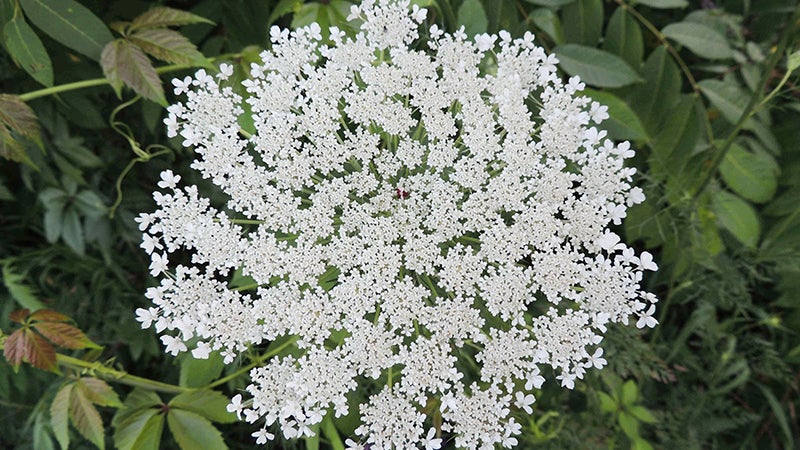Queen Anne’s lace is easy to spot
Published 4:28 pm Friday, August 9, 2019

- Queen Anne's lace (Daucus carota) thrives in rugged roadside terrain. This plant gladly dresses up the view through August with dainty white flowers that are densely clustered in umbrels appearing like rice paper parasols.
|
Getting your Trinity Audio player ready...
|
By Kristi Hendricks
Summer is the perfect season to celebrate Virginia wildflowers, be they native or introduced. As you carriage along to your next vacation spot, slow down to notice the colorful naturalized areas along state-maintained roadways. These roadside gardens have been created by the Virginia Department of Transportation to provide enticing habitat for threatened and dwindling pollinator species such as bees and butterflies.
These areas provide more added value than just a pretty face. The VDOT Pollinator Habitat Program intends to reduce mowing, stabilize slopes, reduce erosion and decrease storm water runoff. And let’s not forget that wildflowers defend against invasive weed species, reducing the effort of removing problem vegetation and the use of costly chemical herbicides.
Queen Anne’s lace kicks off a trilogy of wildflower profile articles. Though named for a British queen’s frilly tatting (Queen Anne was an expert lace maker), Daucus carota thrives in rugged roadside terrain. This plant gladly dresses up the view through August with dainty white flowers that are densely clustered in umbrels appearing like rice paper parasols.
When this naturalized Southside wildflower is included in the flower mix, the road banks appear to be graced with eyelet doilies just for our enjoyment. The shapely blossoms are easy to spot amid the chaos of bolder colors.
Note how this plant changes over time. As the flowers fade, the head begins to dry. The umbel of flowers curls up into a concave shape, hence the common name bird’s nest flower. This cupped structure breaks free and blows with the summer breeze just like a tumbleweed performs in the desert.
Pull up this wildflower by its long taproot after a cloudburst to see why it’s also called the wild carrot for the fresh carroty scent. The fern-like foliage of this plant is as delicate as the bloom and can be easily mistaken for the herb dill.
The dark purple floret in the center of each flower seems to give the blossom more character. This special flower gives way to storytelling of a droplet of blood shed by Queen Anne when she pricked her finger while lace making.
Being biennial, this wildflower grows in a low cluster of leaves the first year. But the second year sees a hairy flower stalk shoot up to support the lovely flower heads until dying in late summer.
Although you don’t want this plant going to seed in your veggie garden, lace does serve as a host plant for the black swallowtail butterfly. You may prefer swallowtail larvae to dine on wild carrot rather than your precious garden dill.
To determine if a wildflower is native to Virginia, visit the Digital Atlas of Virginia Flora. This searchable database, found at vaplantatlas.org, recognizes common and botanical plant names.

